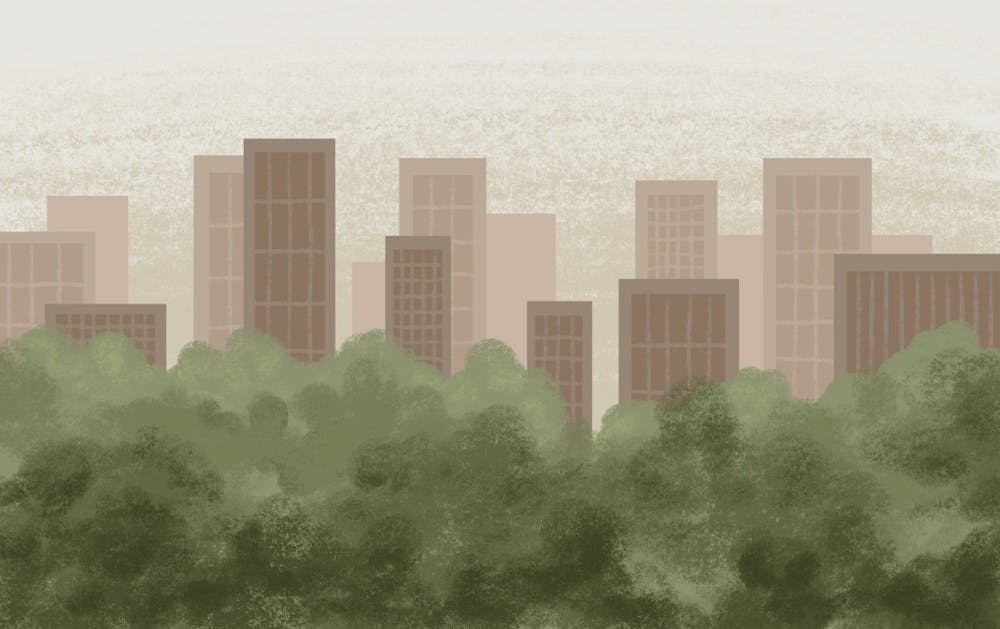With extreme summer temperatures and hundreds of suspected heat-related deaths under investigation, ASU experts and city officials discussed future actions to address rising temperatures due to climate change at a recent subcommittee meeting.
How to reduce temperatures for low-income communities and providing access to shade were addressed at the Urban Heat Island/Tree and Shade subcommittee meeting on Sept. 29.
Mark Hartman, the chief sustainability officer for the city of Phoenix, said Maricopa County officials are working together with researchers to make Phoenix a "HeatReady" city, a program that takes actions like planting more trees and installing "cool" concrete.
"It's part of our DNA, learning how to cope with heat and learning different solutions," Hartman said. "And shade is certainly a big part."
Prioritizing shade in vulnerable neighborhoods is one of many actions the county is doing to reduce the impacts of extreme heat, Hartman said.
According to Hartman, Maricopa County has recently started planting over 4,500 trees per year to create more shade, an increase from the 1,000 trees being planted when the Tree and Shade Master Plan was passed in 2010 to make a Phoenix an "urban forest."
In addition to shade, urban forests help to improve air quality, manage stormwater and reduce energy costs.
But planting more trees is just one part of the solution. Phoenix officials are testing cool pavement, a water-based asphalt coating, to reduce surface temperatures in urban areas with little shade.
In May, officials with the city of Phoenix opened the Phoenix Convention Center to provide relief from heat after many of the heat refuges were closed because of COVID-19 restrictions, Hartman said.
The closing of cooling areas was a move that largely affects the most vulnerable people who can't afford air conditioning, according to Charles Redman, a professor at the School of Human Evolution and Social Change, who said that heat is a "real public threat."
So far this year, 134 people died of heat associated reasons and 212 suspected heat-related deaths are under investigation, according to a report from the Maricopa County Department of Public Health. This is a potential increase from the 197 heat associated deaths in 2019.
"The reality is, the way we build our cities and the way we behave in them has a lot to do with how we experience the weather," Redman said. "We experience heat differentially based on who we are and what resources we have."
David Hondula, an associate professor at the School of Geographical Sciences and Urban Planning, said ASU researchers and city officials are fighting a "multi-front battle" against extreme heat in the Valley.
"Beyond the people who died, we know there are many more people who get sick and go to the hospital requiring formal medical treatment," Hondula said. "And many more people have some sort of adverse impact on their quality of life and well-being because of the heat."
Hondula said this year’s summer is different from past years in that there were record-breaking temperatures and low-storm activity.
This year, Arizona experienced 53 days above 110 degrees, an increase from the previous record set in 2011 of 33 days, according to tweets from the National Weather Service Phoenix.
The Arizona Department of Health Services reported nearly 2,000 people have died from "excessive exposure to heat" in Arizona from 2009-2019, and around 3,000 people a year visit an emergency room due to heat illness. Redman said he thinks these actions could help with how residents respond to extreme temperatures in the hottest months in the year.
"I think they're being thought about because the alternatives, particularly for people who live here, are not good," Redman said. "If we keep getting hotter and we don't address the way we experience heat, we’ll cross a tipping point where it won’t be fun to be here."
A tipping point that would be "economically disastrous" and would diminish our quality of life in Arizona, Redman said.
Hondula said it's going to take joint efforts from researchers, policymakers and residents to protect people from future heat waves in the Valley.
"Everybody has a role to play in helping keep the city cool, and our neighbors safe," Hondula said.
Reach the reporter at kpirehpo@asu.edu and follow @kevinpirehpour on Twitter.
Like The State Press on Facebook and follow @statepress on Twitter.




